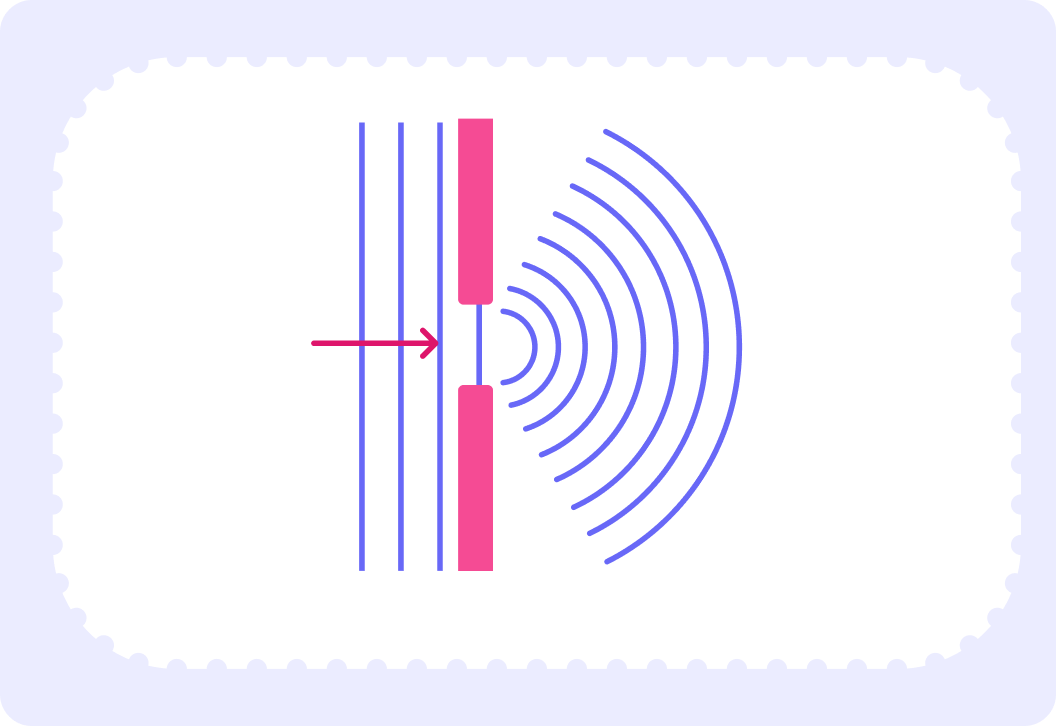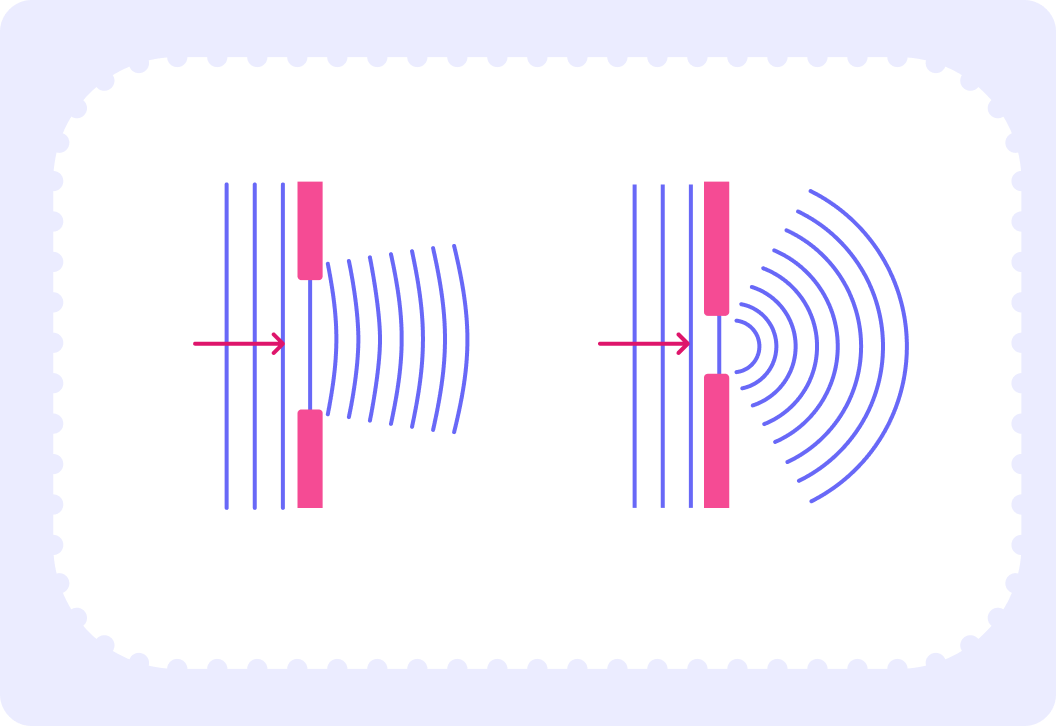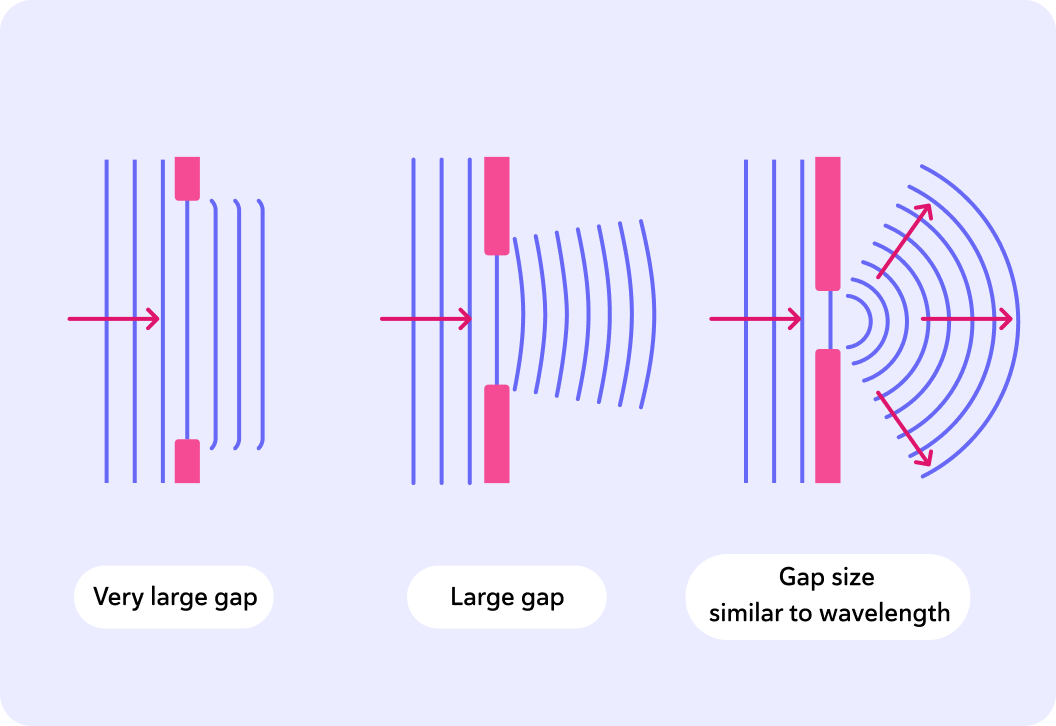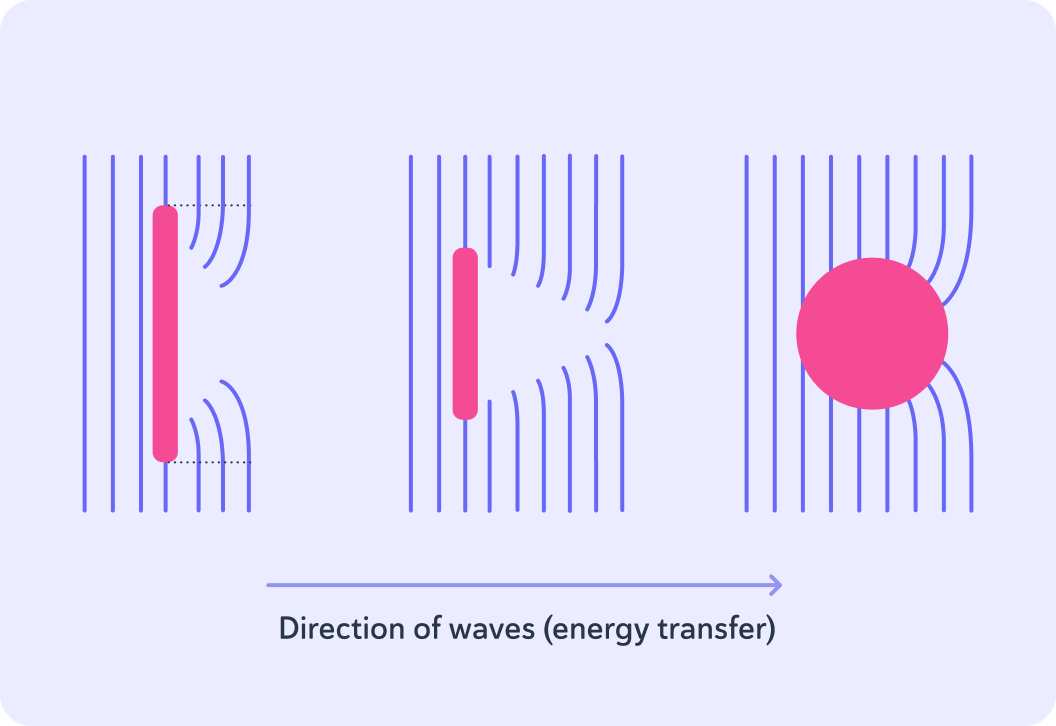YOU ARE LEARNING:
Diffraction, Wavelength and Gap Size

Diffraction, Wavelength and Gap Size
Diffraction is the diffusing of waves when they go through a gap or around an object, of similar size to the wavelength of the waves.
When a set of waves go through a gap or around an object, they spread out. We call this diffraction.
Here is a situation you will come across most often: A series of waves going through a gap or slit.
This could be water waves produced by a ripple tank.

Can you remember what we call the blue lines?


A way to remember what diffraction is, is to think of the word diffuse, which means to spread out.
The waves are diffused by the edges of the walls. They are being diffracted.

Do you think the wavelength of waves is affected by diffraction? Answer yes or no.

Which diagram, left or right, do you think is depicting stronger diffraction?


Which diagram, left or right, has a larger gap or slit?


Pick all the statement below that you think are correct.

You can select multiple answers
Here we can see the diffraction strength of different sized gaps
Notice that the very large gap only affects the edge of the waves. The centre remains unchanged.

Charlie is playing music in a sound proofed room. This means that the walls do not transmit sound. If the door is open, can you hear music if you stand slightly to the side of the door outside the room?

Mary is at a concert and is trying to find somewhere quiet so she can take a phone call. Would standing behind a column block the sound?

Here are some examples of diffraction around an object.
Just like with gaps, the size of the object must be comparable to the wavelength of the waves in order for diffraction to occur.

To sum up the important bits:
- Diffraction is the diffusing of waves when they go through a gap or around an object.
- Diffraction does not affect the speed or wavelength.
- The strongest diffraction occurs when the size of the gap (or object) is similar to the wavelength of the waves.
